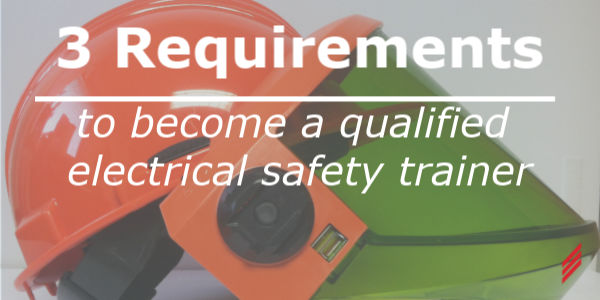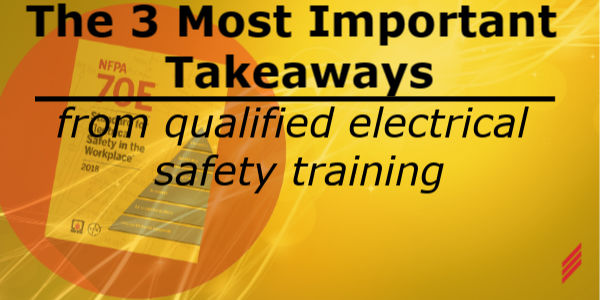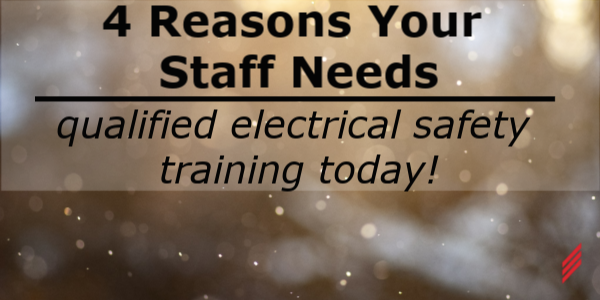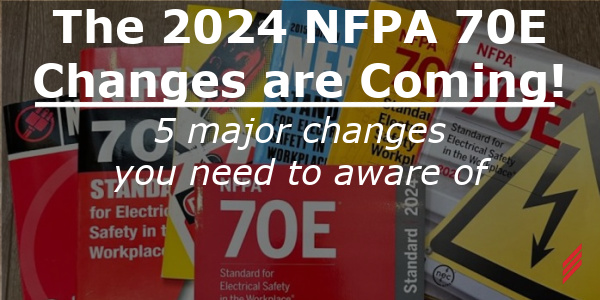3 Requirements to Become a Qualified Electrical Safety Trainer
by Scott King, PMP on Oct 28, 2021 10:20:00 AM

When I first started conducting arc flash assessments about 12 years ago, it never dawned on me to become a qualified electrical safety trainer. We had always retained the services of a third-party vendor to provide this service to our customers.We had several people that we utilized but it was quite an added expense to our proposals and these trainers were so busy, we had to rely on their schedules to get the qualified training completed. Our clients were not very happy about that. Then one night while I was sleeping, a light bulb came on. Why not become a trainer myself? I would be able to keep our costs down by providing a package deal to our customers and I would have the luxury to meet any schedule that I chose or what would work best for our clients. I learned that there are several requirements that you need to meet to become a Qualified Electrical Safety Trainer.
Requirement #1 - Are you cut out to be a Trainer?
Not everyone is cut out to become a trainer. It takes lots and lots of practice and of course, good communication skills and a really good understanding of the material. The course we teach is called “Low Voltage Qualified Electrical Safety Training,” is based around NFPA 70E, and is approximately 8 hours long. So, you can imagine the quantity of material we go through. The instructor needs to know the course material like the back of their hand. I try to keep my class very interactive by asking many questions among the students. This keeps them from falling asleep. 8 hours is a long time, so a good instructor needs to remember that and use any personal skills and tools to keep the audience collaborating and engaged.
Requirement #2 - Find a reliable Trainee Course
There are several ways to become a safety trainer. NFPA offers several courses such as “Certified Electrical Safety Compliance Professional,” which is designed to meet the needs of electrical and safety professionals who oversee electrical safety programs or who manage electricians and other personnel exposed to electrical hazards.
Another organization that myself and a few others within our company have used is the “Electrical Safety Train the Trainer” or TTT conducted by e-Hazard. It’s designed to prepare qualified trainers to deliver instruction to others based on safety requirements from NFPA 70E, OSHA and/or NESC. TTT is one of my favorites. They allow you to role play and they video your instruction so you can see yourself at work and learn how to become a better instructor. They provide you with an instructor’s manual and you can purchase their student training manuals. They also provide other instructor tools in order to facilitate a class and a sample electrical safety program.
Another option that is not as elaborate as the other two would be to purchase an Electrical Safety Facilitator Kit through the National Safety Council. I personally have not used this kit so I would recommend additional research prior to purchasing.
Requirement #3 – Practice, Practice, Practice – Learn the Material and then get started
Because I had a really good understanding of the NFPA 70E guideline, I was fairly comfortable with the course material but that didn’t mean that I was ready to become a trainer having 30 to 50 attendees peering at me for one of my classes. I had to practice and practice role playing the course. I would do it in front of my office colleagues, practice alone and I would do it until I didn’t have to read the slides. I think this is very important. You have 50 people in a class and if you read slides bullet by bullet, you’re going to lose your audience very fast. Personally, I never read slides, I talk to the slides while looking at my students and ask lots of questions. This keeps them engaged. Don’t get me wrong, certainly there is some material that you would read directly from the slide but rarely. If you can talk to your slides, then you know the material. One thing to remember, “you know more than your audience”. That’s how I look at it. You are the subject matter expert and if you believe that, you will be a great instructor and you will be comfortable at doing it. Also, make it enjoyable!
Now you’re ready to do your first class. So get out there and have fun!
Thank you for spending the time to review this material and I hope you have found it useful. Feel free contact me (sking@hallam-ics.com) with any questions or to schedule a qualified electrical safety training for your staff. As part of my next blog, I’m going to talk about The 3 Most Important Takeaways from Electrical Safety Training. These are some of my personal favorites. In addition, I am going to give you an opportunity to download a sample “low voltage qualified electrical safety training” syllabus.
About the Author:
Scott King is the VP & National Director of Electrical Safety Services. Scott has been with Hallam-ICS for over 30 years. Scott and his team have been conducting power system studies for over 15 years.
Read My Hallam Story
About Hallam-ICS:
Hallam-ICS is an engineering and automation company that designs MEP systems for facilities and plants, engineers control and automation solutions, and ensures safety and regulatory compliance through arc flash studies, commissioning, and validation. Our offices are located in Massachusetts, Connecticut, New York, Vermont and North Carolina and our projects take us world-wide.
You May Also Like
These Related Stories

The 3 Most Important Takeaways from Qualified Electrical Safety Training

4 Reasons Your Staff Needs Qualified Electrical Safety Training Today!






Comments (3)